Experts at waste management through large scale industrial cleaning, spill remediation and more, Miller Environmental Group has been able to vertically integrate their
recycling and disposal facilities through acquisitions, growing stronger than ever while continuing to serve the changing needs of customers.
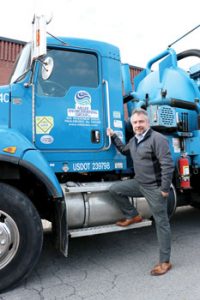
Miller Environmental Group Inc. (Calverton, NY) was started by chance. Jim Miller, a lobsterman on the Long Island Sound, was leaving Port Jefferson Harbor one morning when the local power plant had an oil spill and called on Jim for help. At the time, lobstermen used hay to insulate lobsters they caught, and the hay also happened to make for a great absorbent that would assist in cleaning up the oil. So, with a small crew, Jim got to work and started collecting the oil with his hay and bagging it up.
Thinking he was just being a good steward of the community, the power plant ended up paying Jim and his crew for their time and thanked Jim for being an ‘oil spill expert’. On that day in 1971, Miller Environmental Group Inc. (MEG) was born. Miller thought it was an interesting business and one which could be lucrative since oil spills happened frequently, so Jim bought a couple of vacuum trucks and was able to grow a business.
For the first few years, Jim worked out of his barn, finally purchasing a building in Calverton, NY which served as the corporate headquarters. In 1990, Jim opened his second location in Newburgh, NY and, after a period of growth, sold the company to his son Mark Miller, who became President and Owner in the late 1990s. Mark’s goal was to double the size of the company every few years. From that point on, MEG opened two branches each year until the family sold the company in 2019 to GenNx360 Capital Partners, a private equity firm, and by 2020 doubled the size of the company while continuing to look for acquisitions for continued growth.
Currently employing 317 people with a fleet of 350 vehicles and 28 operation centers across the eastern seaboard, MEG has a network of approved vendors providing solutions across the continental U.S. including Hawaii, Alaska, Puerto Rico and parts of Canada. Miller Environmental Group also owns five TSD Facilities, dealing primarily with petroleum waste. MEG proudly services diverse sectors of the economy, with clients who include major oil companies, independent heating oil companies, utilities, refineries, power plants, airlines, railroads, trucking companies and manufacturing facilities just to name a few.
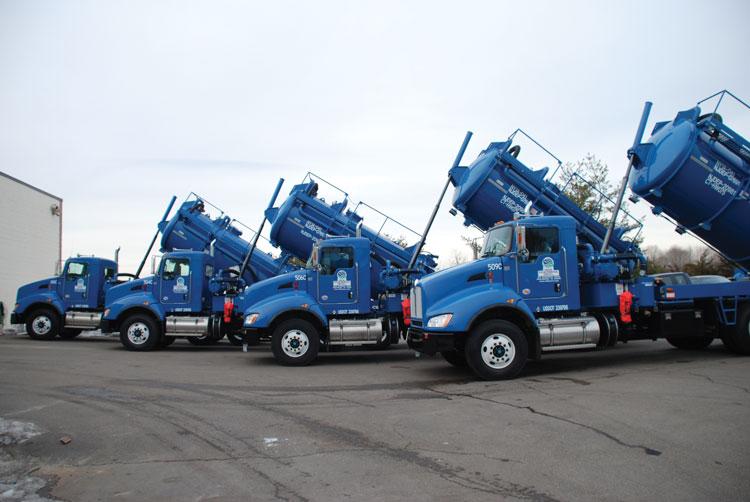
Miller Environmental Group’s solutions span from large scale industrial cleaning and spill remediation to routine maintenance work involving petroleum and chemical tank cleaning, pipeline jetting and inspections. Typical clients have large interior piping systems, sumps, vats, oil/water separators and floor drains that need to be serviced as part of an overall environmental compliance program. MEG is also an emergency response company, performing emergency spill response for all the above-mentioned entities on water and on land. Spills of petroleum products are due to incident, accident or human error, and each emergency response generates waste that must be properly managed, recycled and disposed.
industries that MEG serve generate oily waste, both solid and liquid which must be managed and disposed of in a compliant fashion. The majority of the waste MEG handles is non-hazardous, like oily water, which first goes through a separation process where the oil is separated out and sent to a recycling facility. The water then goes through a two-stage pre-treatment process before being discharged to the local sewer authorities.
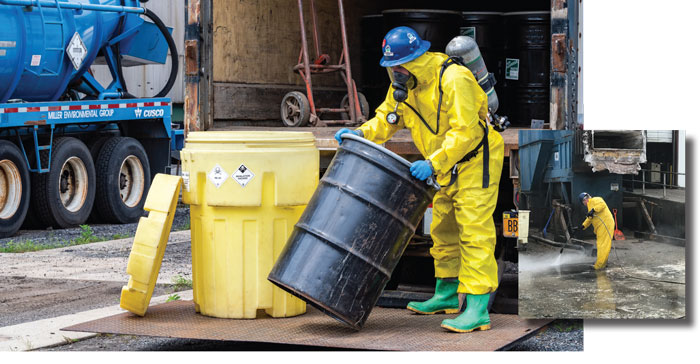
Right: Industrial solutions include tank cleanings, vacuum truck support, site demo and large scale cleaning and plant outage support.
Photos courtesy of Miller Environmental Group. Some pictures taken pre-COVID.
Each year for the last five decades, millions of gallons of oily liquids, and thousands of tons of oily solids have been transported for recycling and disposal by MEG without
incident. “Our clients count on us to make sure their waste is handled properly and sent to facilities that are safe and which comply with all regulations,” says CEO, Jerry Coogan. “We are experts at waste management and have found over time if we were able to vertically integrate through acquisitions, we could increase our efficiencies and value to our clients. We have been focused for some time on locating and purchasing facilities of our own—ones that can be run by our team to provide the high level of safety, compliance and customer service we require and our clients demand.” With MEG’s recent purchases of Environmental Products and Services of Vermont and Monarch Environmental Services, they are now the proud owners of five recycling and disposal facilities in New York, New Jersey and Florida.
Responding Efficiently
Very few sectors of the economy have not been affected by the COVID-19 pandemic. If one looks at the types of clients MEG deals with, you will see they have all been affected in some way. “When people are not buying oil or gasoline, not flying or traveling and watching what they spend on everything, it means our clients have to scale back on production or even close their doors. The ones who didremain open, had to cut their maintenance and disposal costs to meet their budgets. As no surprise, this leads to a decrease in revenue for our company,” says Coogan.
However, Coogan stresses that since MEG is a service provider, their solutions are always necessary. “We managed our schedules so our workforce could be maintained and continue working while responding efficiently to our customers. MEG worked with vendors to navigate these new challenges and made sure our costs were monitored constantly—no excessive spending, maintaining our budget, as well as cutting back on our CAPEX for the year.”
Coogan points out that there was one bright spot for MEG during the pandemic. “For 50 years, whenever there has been an environmental catastrophe, MEG has been there to help. We have responded to everything from the Exxon Valdez spill to the cleanup after the 9/11 World Trade Center attacks, to the Deepwater Horizon Oil Spill in the Gulf of Mexico to several other biologic incidents including SARs, H1N1, Avian Flu, MRSA and Ebola. As first responders, we aren’t able to just stand-by and do nothing, we take action when disaster strikes.”
Early on in the COVID-19 outbreak, MEG knew they had to get their best minds together to develop a response plan for the calls that would come flooding in. This plan would keep employees safe, allowing them to work with confidence while providing a high and EPA-compliant level of disinfection for clients. “As soon as businesses started closing, we knew the impact it was going to have on our customers would be great, and they were going to need us. We got our decontamination experts, chemical specialists, health and safety department, and our training department together with the managers of our operation centers and hosted conference call planning sessions,” explains Coogan. “We met for several days writing a specific contamination plan for COVID, working directly with the CDC and our local counterparts. This really helped us design a responsive and effective plan. In the beginning, the CDC guidelines were changing rapidly, so we took the strongest stance we could to make sure our employees were protected, while getting the job done effectively for our customers. Emergency response work is a reactive business, so whenever we have the luxury, we try to be as proactive as possible.” The emergency response calls for disinfection services started coming in March of 2020 and continue to this day. MEG has been privileged to serve the community during this challenging time for the country.
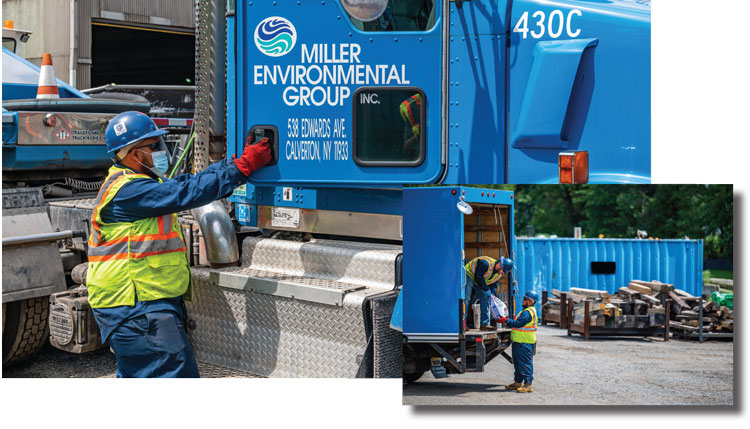
everyone returning to their homes each night.
Right: MEG’s teams receive ongoing training to make them the best at what they do.
Accepted Waste
The petroleum wastes Miller Environmental Group’s facilities take consists of:
• Oil contaminated solids in the form of oily sorbent material, soil and sludges. This material is stabilized, comingled and sent for disposal.
• Oil and gasoline contaminated water. This waste goes through a physical separation process. The petroleum is collected and shipped off site for recycling. The water fraction goes through a filtration and air stripping process for pre-treatment and is then discharged to the local municipal wastewater facility for final treatment and discharge.
Some of the facilities are also permitted to accept a variety of other waste for either comingled disposal or recycling:
• Non-hazardous industrial solid waste
• Non-hazardous industrial liquid waste
• Universal Waste bulbs, light ballasts and batteries
• Asbestos waste
• Household Hazardous Waste from homeowners and very Small Quantity Generators
Facility Construction
The purchase of their first recycling and disposal facility in 2018 was a big challenge for MEG. “After decades of waste management and dealing with facilities as their customer, our goal was to take everything we did not like about the experience and flip it 180 degrees: no lengthy approval processes, turnaround on price quotes in 24-hours, simplified scheduling, no long wait times for trucks to unload. We wanted to treat the drivers with the respect they deserve and to make them feel that we value their time, and knew if we built a facility that could do all of that, it would do nothing but increase our efficiency and improve our bottom line,” says Noel Russ, Facility Manager at the Newburgh, NY TSD location, Water Works.
The Water Works facility was very small when MEG first purchased it. The equipment was old and outdated, and the capacity was small in comparison to what was needed to service the area. Many of the storage tanks were underground and at the end of their service life. There was much work to be done. The entire process of upgrading the facility, modifying permits, equipment upgrades, facility construction, and the cleaning and closing of more than 20 storage tanks was a huge task, but MEG got it done in record time, thanks to the dedication, resources and experience of the team.
Phase I of the construction and equipment upgrade in 2019 included installation of a new treatment system, a concrete containment vault and seven new storage tanks. “The COVID-19 pandemic shut everything down for most of 2020, so we anticipate completing Phase II in 2021, which consists of the installation of a steel building over our tank vault and construction of a new waste drum processing building. We will also complete all of our site work, which includes landscaping and new fencing,” says Russ. “The Newburgh facility has been transformed from a tiny, outdated facility to a safe, efficient, state-of-the-art recycling and disposal facility. Our employees enjoy working here and we enjoy being good neighbors to our community.”
The economy is still recovering from the COVID-19 pandemic, including many of their customers, which poses a business challenge to MEG: when raw materials are expensive, recycled materials are valuable and worth the time and effort. However, the opposite is also true. Comments Coogan, “Right now, our biggest recycled commodity is oil. The cost of a barrel of oil hit historic lows in 2020 and it is still quite low, so this commodity, which usually has value, ended up becoming a cost. We wound up having to pay to dispose of some recycled products that previously we would get credit for. In many areas, because of the state of the oil market, our customers absorbed a lot of this cost. However, MEG continues to be creative and innovative in order to find a home for our recycled oil and gasoline, finding as much value for it as possible.”
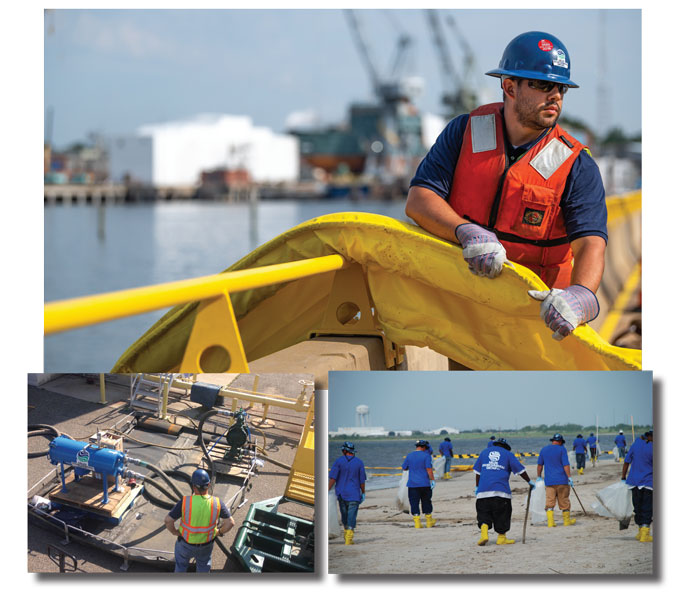
Left: Demo and dismantling projects can include transfer of product, waste disposal and industrial cleaning services. MEG is able to handle it all with expertise and experience earned after five decades of service.
Right: 2010, Deepwater Horizon, one of the largest environmental disasters in
America. An estimated 4.9 million barrels of oil were spilled in the Gulf of Mexico. Miller Environmental Group’s crew of 1,500 people worked in Mississippi and Florida to help clean beaches and marshes from spilled oil, process oil from boats as they returned from the slick and placed miles of boom in the Gulf to contain any oil on the surface.
Planning for Expansion
MEG is still in the process of integrating their recycling and disposal facilities. Their Newburgh, NY location is currently going through Phase II of their upgrades, including the enhancement of the property for better traffic and turnarounds while reorganizing how the buildings are used. Says Coogan, “This location grew much quicker than anticipated, so we have to make some adjustments. In addition, the Buffalo, NY facility will commence a facility upgrade this year, which includes more storage capacity and pre-treatment and direct discharge of treated water to the municipal sewer authority. Our Syracuse, NY facility has been established successfully for decades and has diverse capabilities with a growing list of clients—we look forward to another great year there.”
“Most recently, we purchased facilities in Woodstown, NJ in the Philly metro area and outside of Tampa in Plant City, FL. They are currently undergoing process improvements and renovations to increase safety and efficiency,” says Coogan. “I’m really excited about the Plant City facility. We just closed on the property next door, so we’ll be putting in an operations center for all service lines—remediation, emergency response, industrial cleaning and more. MEG is growing and stronger than ever; we will continue to serve the changing needs of our customers, and one of the ways to do that is through expansion.”
Giving Back
Miller Environmental Group donates to many of the local communities they service. According to Coogan, there is a budget for every branch to give to local charities and sports youth programs. Pre-COVID, MEG held many ‘Touch-a-Truck’ events as a good way to promote their business to children and young kids coming up through the industry. “We really enjoy being at job fairs at schools and colleges, explaining our business to people that might want to pursue a profession in the environmental field. Most people think of this field as more engineering-based and we try to show them the nuts and bolts of the business. Because our business is very current event-based, we have so many neat stories to tell. If there is an environmental incident or catastrophic event going on (train derailment, oil spill, hurricane cleanup, HAZMAT incident, etc.), they have heard of it and we can tell them of MEG’s involvement in it and how we have built a business helping to respond to these interesting and challenging events. When you work in our field there are very few times when you are doing the same thing two days in a row!”
He continues, “The company wouldn’t be what it is without the team. We work on everything together. Many of the team members have been with MEG for decades and the knowledge, experience and pride they bring to work each and every day is inspiring. It
really is an incredible group of people and I couldn’t be more proud of them.” | WA
For more information about Miller Environmental Group’s Transportation, Disposal & Storage Solutions, contact Noel Russ, Facilities Manager, at (845) 561-4111 or e-mail [email protected].
